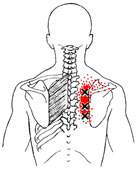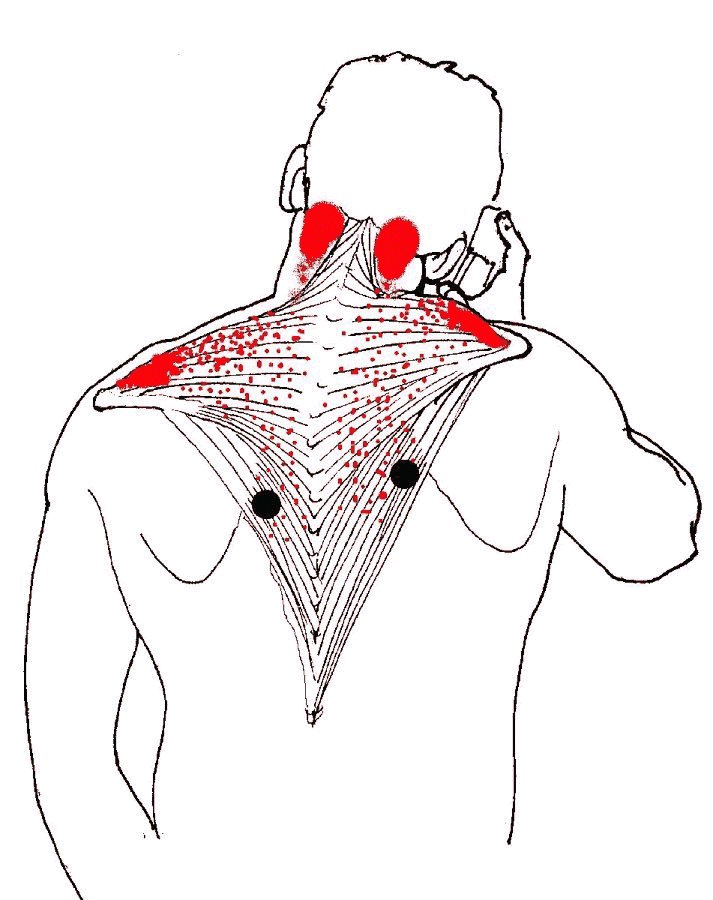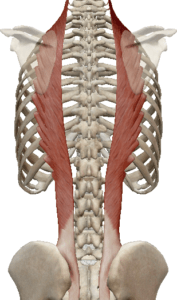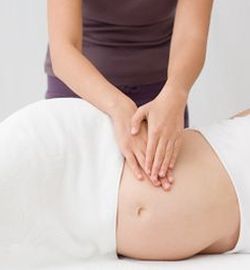Upper back pain is typically caused by tension and active trigger points in the rhomboid muscles.
 The rhomboid muscles travel from the spine to the medial border of the scapula. They lie deep to the trapezius muscle and function to pull the scapula inward (retraction), rotate the scapula and provide stabilization of the scapula against the thoracic cage.
The rhomboid muscles travel from the spine to the medial border of the scapula. They lie deep to the trapezius muscle and function to pull the scapula inward (retraction), rotate the scapula and provide stabilization of the scapula against the thoracic cage.
The rhomboid muscles are prone to pain and functional disturbances due to strain and poor posture. When the shoulders are too far forward and rotated inwardly, the scapulas are moved away from the spine. This puts the rhomboid muscles in a constantly over-stretched position, causing weakness and the development of active trigger points.
Active trigger points in the rhomboid muscles refer pain around the scapula.
Other symptoms include:
- Pain between the shoulder blade and spine that worsens after activity
- Relief of pain when pressing into the area
- Pain may be felt when you lift your arm out to the side, especially with resistance
- Tingling or numbness may occur in the ulnar part of the hand (pinky side) if tension in the rhomboid muscles irritates the ulnar nerve
- Pain may be present with deep inhalation, coughing or sneezing
Another muscle that can frequently cause pain in the upper back is the trapezius muscle.
The lower fibers of the trapezius are  often over-stretched and weak while the upper fibers are overworked and tight.
often over-stretched and weak while the upper fibers are overworked and tight.
- Pain in the middle back between the shoulder blades
- Pain may be felt at the end of a deep inhalation or sneeze
- There may be pain with burning sensations, goose bumps and/or tingling that feels similar to shivers in the area. This helps differentiate from middle back pain caused by the rhomboids.
- In severe cases, the upper trapezius also causes pain associated with neck movements
- Pain is also referred to the tip of the shoulder and the base of the skull
A third muscle that may cause upper back pain is the iliocostalis thoracis muscle.
This long muscle of the back functions to extend, flex and rotate the spine. Active trigger points in the iliocostalis cause pain in the middle back that may extend to the low back and even the abdomen and front of the chest.
Pain can be felt in between the shoulder blade and spine, as well as below the shoulder blade and in the ribs. Rotating, extending and flexing the spine can trigger the pain.



